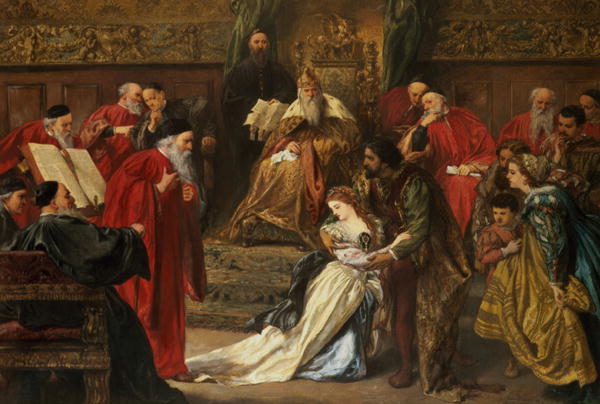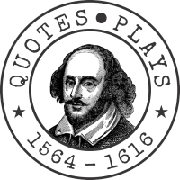
King Lear is one of the most famous tragic plays written by Shakespeare. The plot revolves around the protagonist King Lear, who is shown to be susceptible to the words of love and affection that people shower upon him. This tragic flaw in his character leads to his downfall and also sets the action of the play. His younger daughter, Cordelia, who fails to satisfy his hubris(pride), is banished from his kingdom. Also, the play exposes the hypocrisy of human behavior vividly through the characters of Gonderil and Regan. Furthermore, tragedy explores several traits of human nature like greed, jealousy, flattery etc which makes the play unique in itself.
The story of the main plot revolves around King Lear who plans to divide his property among three of his daughters. Gonderil and Regan win his heart with their words and hence Lear happily divides his property between them. His third daughter, Cordelia, who loves him the most, is banished as she fails to feed the vanity of her father through her honest words. Further action of the play interrogates this wrong decision made by King Lear and how it leads to his own tragedy. The subplot revolves around another story where Edmund dupes his father Gloucester, to believe his words against his own brother, Edgar. Hence themes of father-son relationships remain central to both the plot stories.
Someone has rightly said that actions speak louder than words. Gonderils continual wicked intentions are exposed through her actions towards her father. Lear learns to understand this difference between words and deed only through harsh experience. In the very first scene of the play, Kent makes several attempts to make Lear realize the futility of empty words and is also banished. The subplot of the play further talks about the intricacies of human behavior through the characters like Edmund. His character in many ways is similar to the character of Iago in Shakespeares another play, Othello. The themes of main plot resonate in this subplot too. They intricately explore some vices and virtues in human behavior through multifaceted characters ranging from King to The Fool. Shakespeare deliberately employs this technique so that he can bring out the theme of good vs evil explicitly.
Several parallels can be drawn between these two plots. Both the fathers, King Lear and Gloucester are unable to see through the treacherous plans of their own children. Unfortunately both King Lear and Gloucester fall prey to the sugarcoated words of Gonderil and Edmund. Also, Cordelia and Edgar who are shown to be most sincere towards their fathers, meet a terrible fate. Likewise, Edmund, Gonderil and Regan are shown to be utterly ambitious and their greed to seek political power is exposed various times during the play. Hence, it can be concluded that subplot mirrors the main plot to further strengthen the themes of hypocrisy, pretentiousness in the play.
The theme of divine justice also becomes a very important aspect of the play. The deaths of innocent characters like Cordelia and Oswald complicates this theme. Did they really deserve the fate they had been subjected to? Throughout the play, both of them have been shown in a favorable light and their tragic deaths have been questioned by various critics. The deaths of Gloucester and King Lear is acceptable to some extent as their inability to see through evil designs of characters like Edmund, Gonderil, led to the disruption and chaos.
One of the most important characters in the play is The Fool. Such characters like the clown, fools remained central to Shakespeare’s tragic plays. The main aim of the character remains to expose the vices of his society through his witty remarks to King Lear. His satirical subtle comments at several times during the play also help the King to realize his own follies.
One of the another important theme in the play remains the constant conflict between good and evil.This contrast is shown through characters like Edmund, Regan, and Goneril who are an embodiment of vices like hypocrisy, avarice, anger, lust, and pride; while Edgar and Cordelia are the epitome of virtues like unconditional love, kindness and innocence.
Another major theme of the play revolves around moral blindness of characters like King Lear and Gloucester.Lear lacks the insight to see through his own children and his succumbing to words of flattery clearly shows his inability to judge people accurately. Similarly, Gloucester’s physical blindness later in the play reinstates this theme. In a way, it can be concluded that they realize the gravity of their wrong actions only after physical impairment. Furthermore, themes of madness and blindness intermingle in the second half of the play. Gloucester realizes his error in judgment only after he loses his ability to see whereas King Lear is able to see through malicious and evil deeds of his daughter only after he gets mad and is betrayed by his daughters.
It can be said that Shakespeare intended to strongly critique his society which was driven by forces of money and power significantly. Several minor characters in the play like Duke of Cornwall and Duke of Burgundy also elaborate on this theme. For example, Duke of Burgundy who stands in stark contrast to Duke of Cornwall refuses to marry Cordelia after she has been banished by her father and is no longer a part of his inheritance.
The play can also be reinterpreted through Christian Doctrine in which Cordelia acts as a Christ figure plays an important role in redeeming his father King Lear and restoring him back to the throne. The play can be seen in quasi-allegorical terms as the personal pilgrimage of Lear, a quest in which he is to suffer so that he can finally be redeemed through the agency of holy figure of Cordelia.
Several features of a tragedy can be seen in the play to a large extent. Many critics have characterized the play as a tragedy because protagonists own error in judgment leads to his downfall. Their actions decide the fate of other people around him. This makes characters of Gloucester and King Lear tragic rather than melodramatic.
